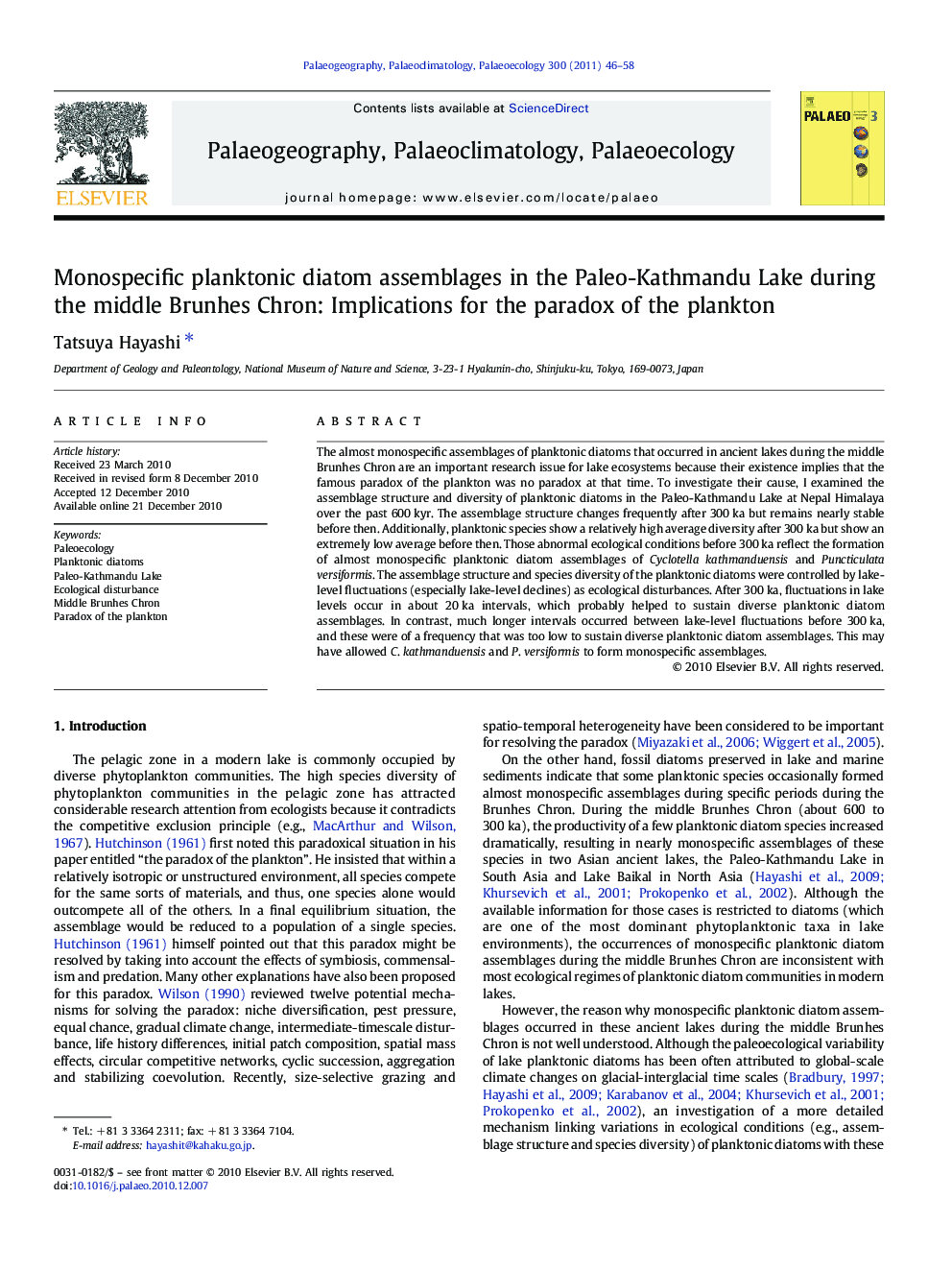| Article ID | Journal | Published Year | Pages | File Type |
|---|---|---|---|---|
| 6350627 | Palaeogeography, Palaeoclimatology, Palaeoecology | 2011 | 13 Pages |
Abstract
The almost monospecific assemblages of planktonic diatoms that occurred in ancient lakes during the middle Brunhes Chron are an important research issue for lake ecosystems because their existence implies that the famous paradox of the plankton was no paradox at that time. To investigate their cause, I examined the assemblage structure and diversity of planktonic diatoms in the Paleo-Kathmandu Lake at Nepal Himalaya over the past 600Â kyr. The assemblage structure changes frequently after 300Â ka but remains nearly stable before then. Additionally, planktonic species show a relatively high average diversity after 300Â ka but show an extremely low average before then. Those abnormal ecological conditions before 300Â ka reflect the formation of almost monospecific planktonic diatom assemblages of Cyclotella kathmanduensis and Puncticulata versiformis. The assemblage structure and species diversity of the planktonic diatoms were controlled by lake-level fluctuations (especially lake-level declines) as ecological disturbances. After 300Â ka, fluctuations in lake levels occur in about 20Â ka intervals, which probably helped to sustain diverse planktonic diatom assemblages. In contrast, much longer intervals occurred between lake-level fluctuations before 300Â ka, and these were of a frequency that was too low to sustain diverse planktonic diatom assemblages. This may have allowed C. kathmanduensis and P. versiformis to form monospecific assemblages.
Related Topics
Physical Sciences and Engineering
Earth and Planetary Sciences
Earth-Surface Processes
Authors
Tatsuya Hayashi,
